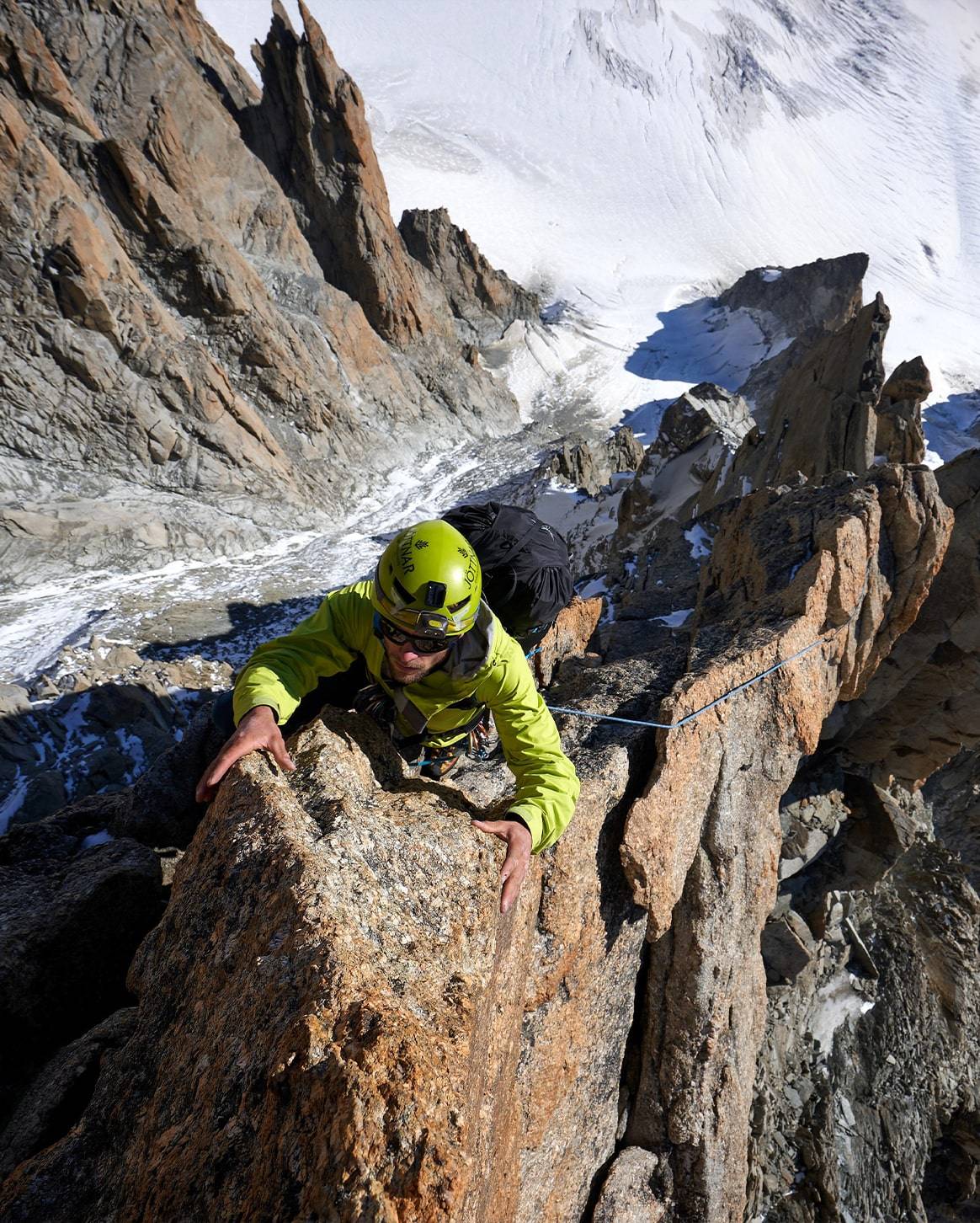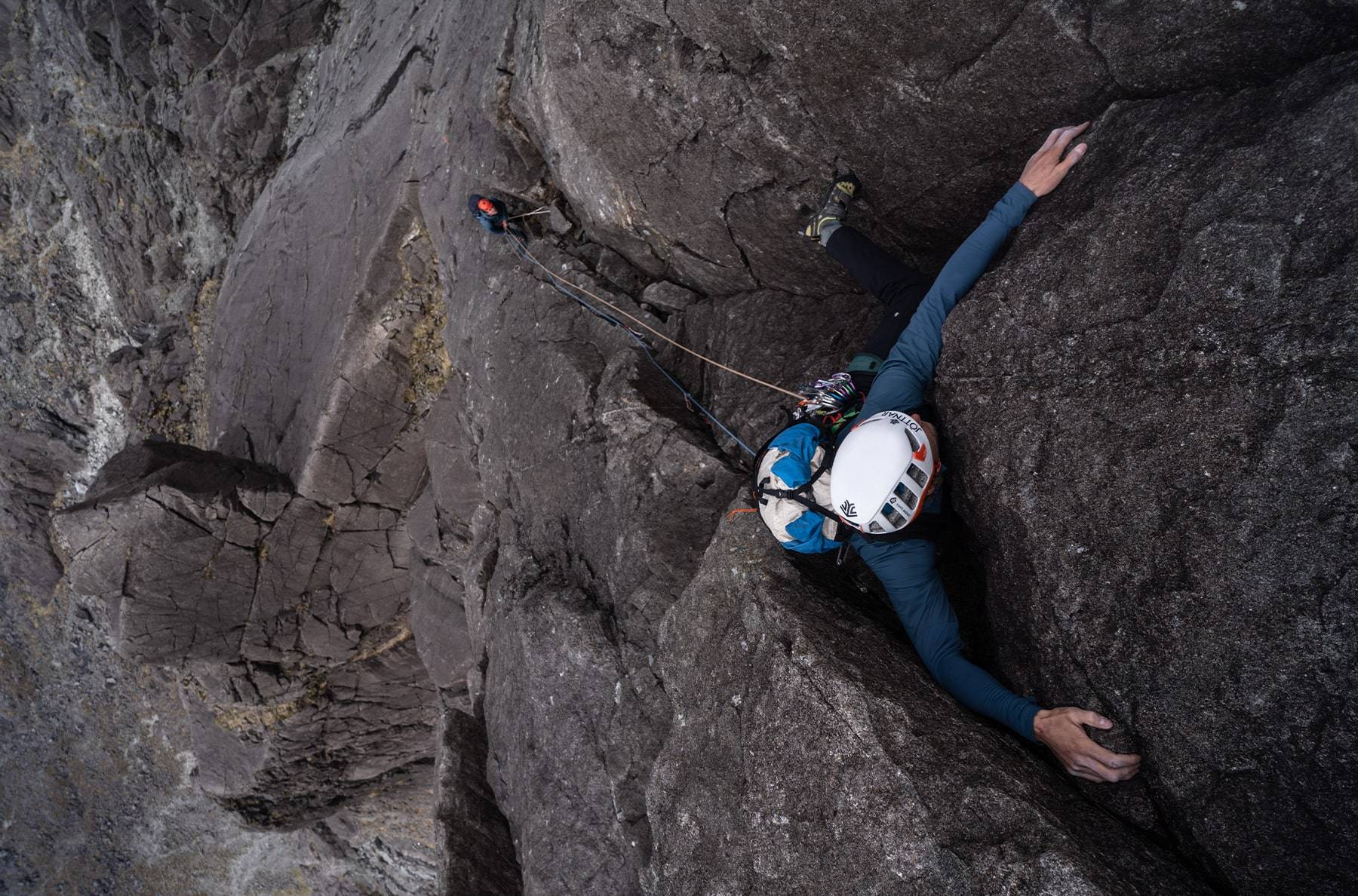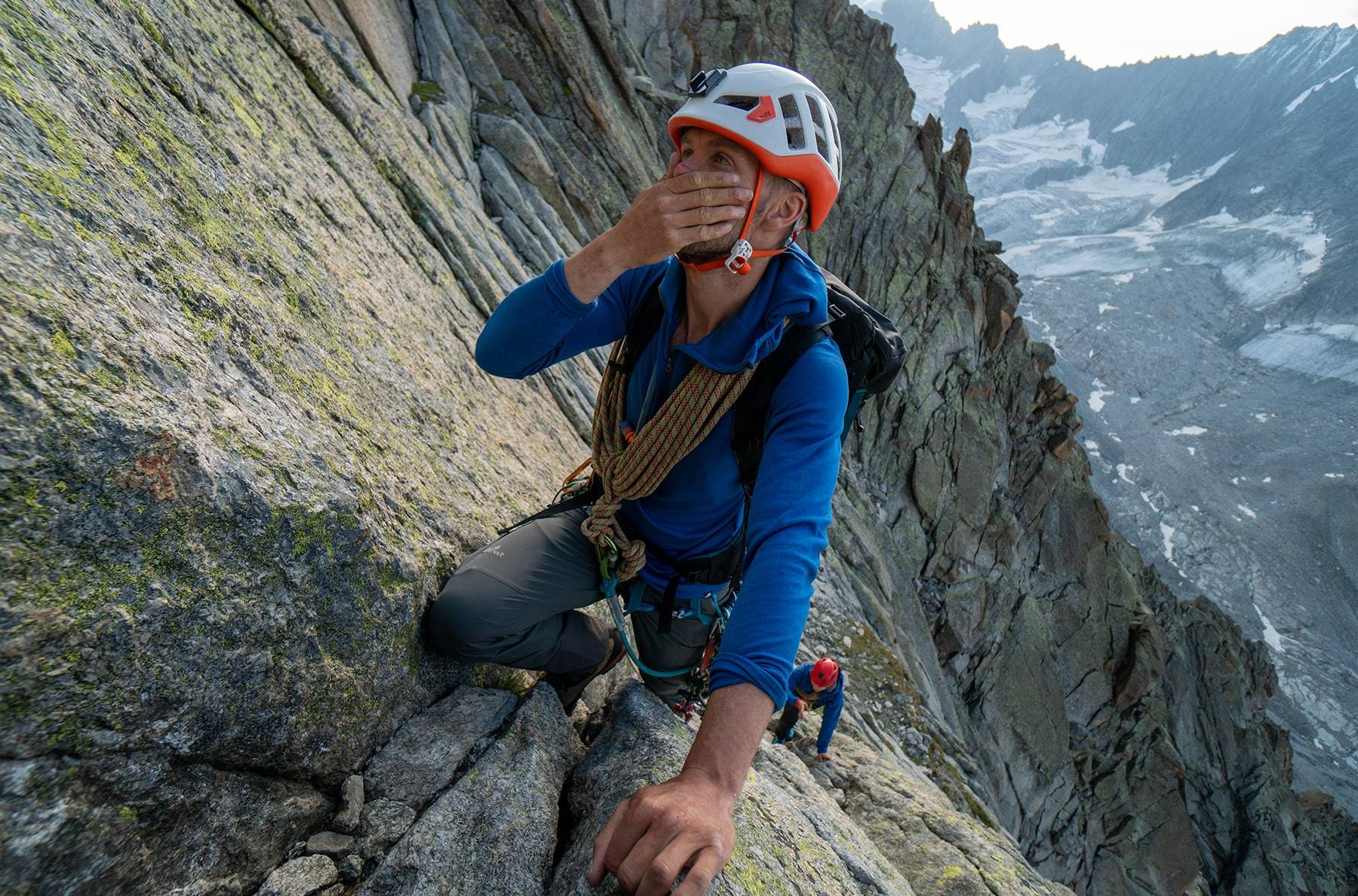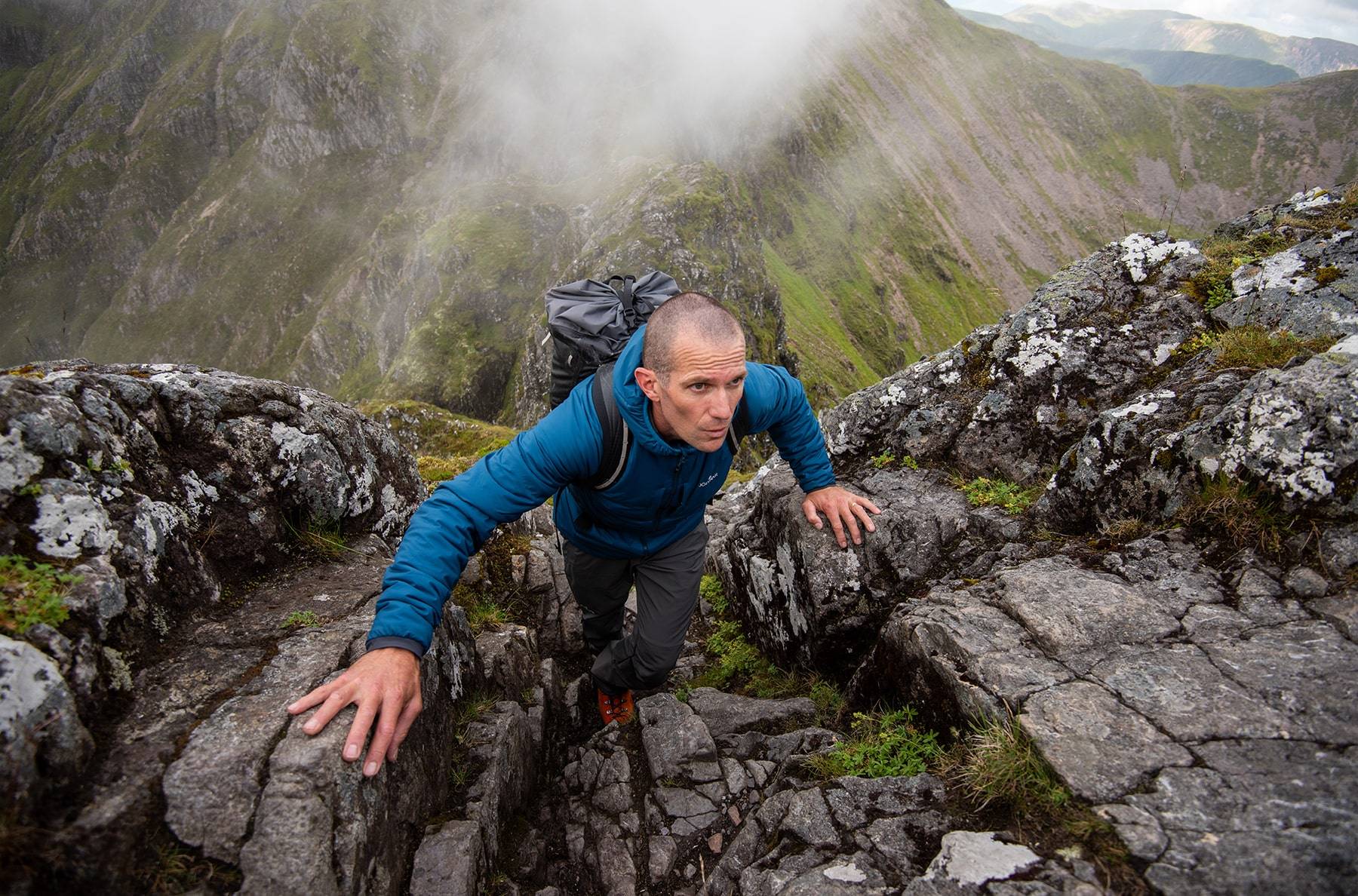HOW DO YOU BALANCE RISK AND REWARD IN THE MOUNTAINS? mIKE PESCOD OF THE JÖTTNAR PRO TEAM REVEALS HIS HARD-WON ADVICE.
Social media presents a glamorous image of awesome sends, first ascents and non-stop successful climbs of inspiring routes. It’s full of great accomplishments, made by smiling athletes who are always successful and never get hurt.

Learn the craft and build your personal database of experience.
What we don’t see is the less glamorous grind of going out, learning the craft and building the personal database of experience. Days spent getting it wrong, making poor decisions and learning from mistakes. Stories like “I dropped a glove on the first pitch and abseiled off”; “I got soaked walking in and blown off my feet, so we went down for coffee and cake”; or “I got scared today, something spooked me, so we didn’t climb anything and now I feel rubbish,” don’t make it to Instagram. But these are the most valuable days, those that build our knowledge and skills that make the super-send possible. It’s these days that make it possible for us to make good risk assessments.
A risk assessment is not about paperwork or about making things safe. It’s about assessing risk and doing something to make sure that the risk is acceptable to achieve the reward. Nothing is safe. Driving to the crag isn’t safe, and even staying at home to avoid the risks of the world outside comes with potential of diabetes, poor mental health and heart disease. Nothing is absolutely safe – what we are aiming for is safe enough.
Some risks are obvious. Falling off a climb is an obvious risk and generally not a good idea. But if the risk of falling is managed appropriately then it can be made safe enough – such as in sport climbing. However, when ice climbing, falling off is generally a bad idea: the protection is less secure, more spaced and you have very sharp tools attached to your hands and feet.

In the safe-enough zone, you are aware of the risks.
Other risks are less obvious. Over the last decade, we’ve come to understand the risks associated with human factors which influence our decision making. We might have decided not to climb a particular route for a very good reason based on climbing conditions. but if we see someone climbing it then we are likely to allow this to change our thoughts. Nothing has changed the risks of the terrain, but it’s very easy to allow this social proof to subconsciously affect us.
If we’ve told all our friends that we’re going to summit a particular peak and we have travelled a long way to get there, we will interpret the same weather forecast very differently to someone living locally who has nothing to prove. The problem is that we all do this without knowing it.
The risk of avalanches is a particular hazard that is hard to quantify. Unfortunately, we often get positive feedback in avalanche terrain when we should get negative feedback. It is easily possible to walk across a slope that is very close to avalanching, and to think that it is completely stable. This is likely to make us decide to do it again in the future. Eventually, you will end up on a slope just on the other side of the line and it will slide. This is negative feedback, but not the kind that you can walk away and learn from.

Have mini-epics, adventures and learning days.
How do we make climbing safe enough? We build in a margin. When there are unknown risks, or risks that are hard to quantify, we need a bigger margin. You need to develop a sensible risk scale – we can call it a twitchometer. In the safe-enough zone, we are aware of the risks and we are managing them to a level that is acceptable. Even in this zone, things go wrong out of the blue sometimes and accidents happen. But, generally, things work out OK.
If we take on too much risk and we can’t manage it properly, accidents will happen. You’re in the red zone. Don’t go there.
The bit in the middle is our margin and we should also not operate in this zone. It’s the buffer between safe-enough and accidents happening. It’s the area that we leave for the unknowns, for the unknown unknowns, and for the subtle-but-powerful human factor influences that we are all susceptible to.
When you look at Tim Howell base jumping, it would be easy to think that there is no margin, that it is all far too risky. This is not the case. The margins are small, but they are very carefully measured. The outcome of a mistake would be very consequential, but the chances of this are managed to be low enough to be acceptable by rehearsal, obsessive checks, practice and very high skill level. When I go and solo a classic ice climb such as Point Five Gully or Mega Route X, it is the same. The biggest risk is not one of falling off, but that I lose the cognitive control to stay calm and focussed. We are both in the safe-enough zone, despite what it might look like.
Very high skill level required: Jöttnar Pro Team member Tim Howell takes flight.
Very high skill level required: Pro Team member Tim Howell takes flight.
The dangerous area to be in is the unknown risk. You could call it blissful ignorance. Most people turn back before they get to this point with a quick reaction of “this looks dangerous”. But some people carry on, very often due to human factors influencing their decisions. It is difficult to manage the unknown unknowns. We don’t know what we don’t know. So, we can carry on trying to do something like what we have seen other people doing, but without understanding their knowledge or skill level.
The only answer is to give yourself a nice comfortable margin and to go and learn by doing. Have mini-epics, adventures and learning days. Embrace the small stuff that goes wrong and be happy to say to yourself that it is another valuable bit of information to go into your database. Be positive about “failures” because it is these that are most valuable. We all need to commit to a lifetime of learning and incremental steps towards where we want to be. It does not happen instantly; but getting there is so much more rewarding as a result.
Don’t expect to have days like you see on Instagram straight away or all the time. Nobody does - including the people you see posting on Instagram.

Jöttnar Pro Team member Mike Pescod in his element.

Mike Pescod is a member of the Jöttnar Pro Team. Find out more here.